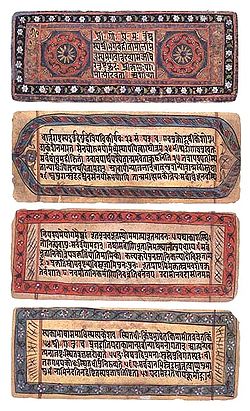
Manuscriptology is another word for codicology, namely the study of history and literature through the use of hand-written documents.
Contents
The term is in use particularly among scholars of South Asian cultural history because many South Asian manuscripts are not codices in the strict sense of the word. That is to say, South Asian manuscripts are typically written on unbound sheets of paper or palm leaves, in a landscape format. Vellum and parchment - typical writing materials used in the European codex - are not used in India since leather - the material used for vellum and parchment - is considered impure in Indian traditions. [1]
There are exceptions. The codex format is used for manuscripts in Kashmir, for example, where the concept of the manuscript book was influenced from European models transmitted by Islamic culture.